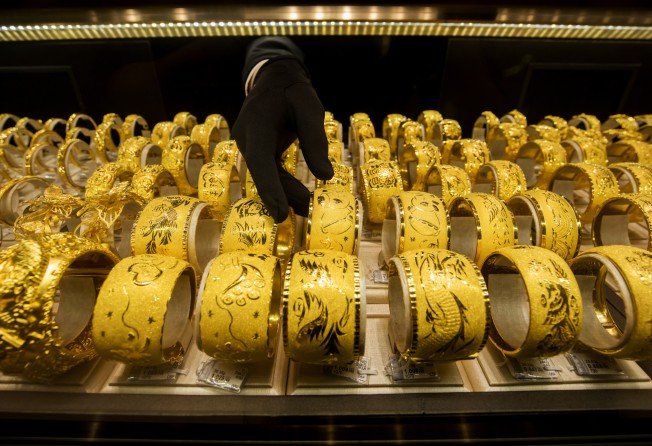Is China stockpiling gold? 1 million ounces added in November amid Beijing’s asset diversification efforts
- China increased its gold reserves for the first time since September 2019 in November by 1.03 million ounces to lift its holdings to 63.67 million ounces
- Increased purchases of gold are expected amid Beijing’s diversification efforts and international financial market volatility

How big are China’s gold reserves?
China increased its gold reserves by 1.03 million ounces in November, according to data released by the State Administration of Foreign Exchange at the start of December.
The first monthly increase since September 2019 lifted China’s gold reserves from 62.64 million ounces at the end of October to 63.67 million ounces, worth around US$112 billion.
China holds the world’s sixth largest gold reserves behind the United States, Germany, Italy, France and Russia.
The gold reserves, though, are dwarfed by China’s US$3.29 trillion official reserve assets, which included US$3.1175 trillion of foreign exchange reserves at the end of November. China’s foreign exchange reserves are mainly US dollar assets.
Actual gold reserves, though, could be larger than official figures due to proxy holdings by state-owned miners, sovereign wealth funds and other government investment vehicles.
Why did China increase its gold reserves?
China has added to its gold reserves during six windows since 1978, government data showed, with increases in recent years attributed to Beijing’s asset diversification endeavours.
Gold is often a preferred choice when global markets become increasingly volatile and the threat of a worldwide economic recession looms.
The value of non-US dollar assets have dropped quickly against the backdrop of the aggressive US Federal Reserve interest rate increases and a strong US dollar this year.
According to the World Gold Council, central banks added a further net 31 metric tonnes of gold to international reserves in October, boosting official reserves to their highest level since November 1974.

Turkey, Egypt, Uzbekistan, Iran, India, Qatar and the United Arab Emirates were the top buyers this year, according to the World Gold Council.
Buying gold is also seen as a way for China to lower the proportion of US dollar assets it holds. According to the most recent official figure available, China’s US dollar assets accounted for 59 per cent of its foreign exchange reserves in 2016.
But despite the lack of more up to date official figures, China is believed to be diversifying its assets having dumped US$113.9 billion of US Treasury bills in a 12 month period up to the end of September.
How much gold is China expected to purchase?
China’s 63.67 million ounces of gold reserves are fairly low compared to other countries at around a quarter of US holdings last year, according to the World Gold Council.
In terms of gold as a proportion to reserve assets, China’s 3.3 per cent is roughly at the similar level of Saudi Arabia, Indonesia and Mexico.
It is, though, lower than other comparable economies, with Japan at 3.67 per cent, India at 7.7 per cent and the US at 66.6 per cent.
China’s last increase came between November 2018 and September 2019 when it added 3.4 million ounces.
Its largest increase occurred between June 2015 and October 2016 when China added 25.35 million ounces as stock and foreign exchange markets tumbled.
What is China’s gold strategy?
China’s choice of increasing its gold reserves is justified because it is the world’s largest consumer.
It depends on imports to meet domestic consumption, which jumped by 36.5 per cent year on year to 1,120 metric tonnes in 2021.
In the 2021-25 gold industry development guidelines released by the semi-official China Gold Association in November, gold is deemed to have important and “unreplaceable” functions in hedging, retaining value and safeguarding financial security.

Estimating that China’s gold consumption could reach 1,300 metric tonnes in 2025, the guidelines highlight plans for heavy investment in exploration and mining.
Domestic gold production is expected to reach 530 metric tonnes by 2025, an increase from 444 metric tonnes in 2021.
Gold produced using imported materials will also be expanded from 115 metric tonnes to 130 metric tonnes over the same period.